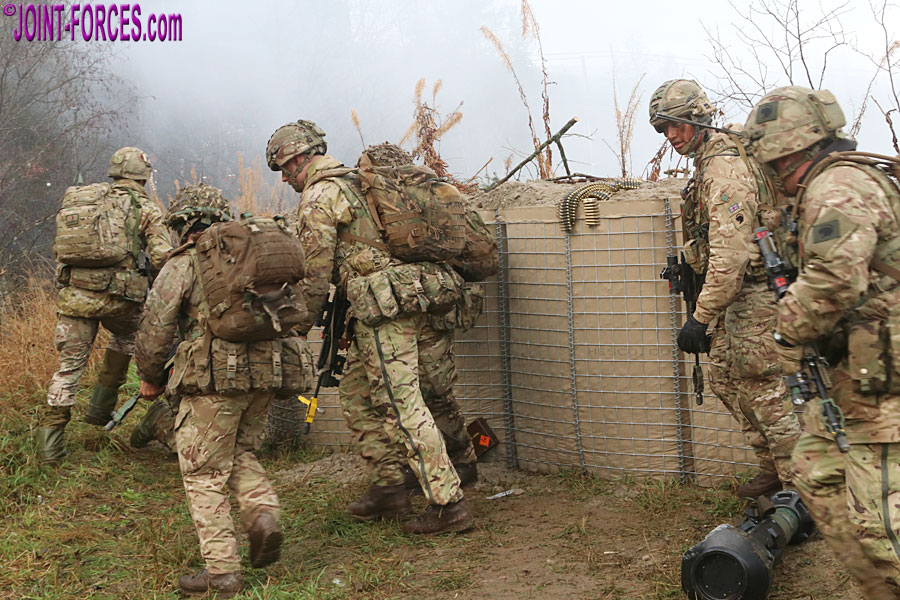'Emotional intelligence' key for Army's new Rangers units
Troops hoping to join new special operations regiment will have to show personal characteristics beyond those required by regular soldiers
ByDominic Nicholls, DEFENCE AND SECURITY EDITOR25 November 2021 • 12:01am
Britain’s new special operations units will assess applicants on their “emotional intelligence”, the commander has revealed.
Troops hoping to join the
Army’s new Ranger Regiment will have to demonstrate personal characteristics beyond those required by regular soldiers.
Resilience, calmness and self-awareness will be tested on a two-week assessment cadre that will include “protracted periods of time under duress,” said Brigadier Gus Fair, the first commander of the
Army’s new Special Operations Brigade, has said.
Comprising four battalions, each of about 300 soldiers, the Ranger Regiment will officially stand up on December 1, and will form the core of the specialist brigade, accompanying troops from other countries into action against terrorists and hostile state threats.
Two other new brigades are expected to be announced in parliament on Thursday by Ben Wallace, the Defence Secretary, when he gives more details on
Army restructuring and basing plans.
The Security Force Assistance Brigade will train partner nations’ military units, but will not go into battle with them, while a new Deep Strike Reconnaissance Brigade will use drones, artillery and missiles to destroy targets at ranges up to 100 miles.
Emotional intelligence, also known as emotional quotient or EQ, is said to be the ability to understand, use and manage one’s emotions in positive ways to relieve stress, communicate effectively, empathise with others, overcome challenges and defuse conflict.
Brig Fair said that he was looking for “EQ, not just IQ” in the new force.
Drawn from across the Army, he said the Rangers would not take talent to the detriment of other units, adding: “This should have a positive pull-through effect.”
Equally, the new units will not be competing with special forces for applicants
“We’ve got an interest in continuing to prime that pump,” Brig Fair said. “In many respects, we will be one of the main feeds into the UK special forces group.”
Officers will rotate through the special operations brigade in the same way as the current special forces units, typically on two-year postings. Soldiers will be able to stay for longer and perhaps their entire careers.
After the two-week initial assessment, applicants will then have to prove a high level of soldier skills over two months.
Only then will they officially join the Rangers and be able to wear the new gunmetal grey beret, which has a
cap badge based on a peregrine falcon, a bird of prey said by the Army to operate “in all environments including deserts, mountains and cities”.
After being “badged”, new recruits will undergo a further eight months of specialist training before being ready for deployments overseas.
The four infantry regiments currently acting as the building blocks for the special operations brigade will be officially renamed on December 1, as first to fourth battalions of the Ranger Regiment.
Each has been given a specific regional focus: Europe, the Middle East, and west and east Africa.
Troops from the forerunner units trained local forces in Kuwait, Iraq and Nigeria in 2018 to test the concept.
'Authority and resilience'
Brig Fair said that the Ranger Regiment model of partnering with military, police and other security forces in areas of crisis would be different to Nato’s recent experience in Afghanistan.
In future operations, UK Ranger units will ensure they “don’t undermine sovereign ownership of the mission,” he said.
“From the outset, [Afghanistan] was a Nato mission. It became an Afghan mission [but] arguably we’d already laid the ground-work; we’d undermined their institutional authority and resilience.”
He said that the Rangers would “very firmly” ensure the host country was the “focal point”. The situation in Afghanistan evolved to the point western forces were the “supported element” with partnering seen as “incidental”.
In a letter to the Army, General Sir Mark Carleton-Smith, the Chief of the General Staff, said that the Army’s modernisation project, of which the three new brigades are a part, “is an exciting and bold blueprint for a transformed Army, making it the most capable Army of its size anywhere in the world.”
The ranger regiment
Micro-drone operator
Short duration and used for over-watch of friendly forces’ home base to ensure security
Puma drone operator
Four hour’s duration, day/night camera for locating enemy forces
Dog handler with dog
Specially trained to sniff out explosives
Medic
Trained in battlefield medicine
Explosive ordnance disposal operator
With remotely operated vehicle to search areas for bombs
Vallon operator
With specially adapted metal detector to search for buried bombs
Troops in vehicle
One of whom is manning a machine gun
















